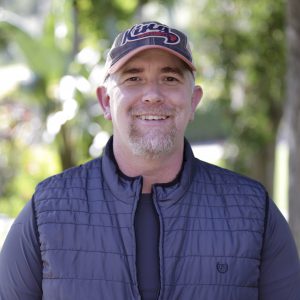Brian Daniel: In June 2015 we ran a post entitled Three Environments for Disciple-Making about three spaces, or environments, to consider in your mission of making disciples. The environments identified in this post were Life-on-Life, Life-in-Community, and Life-on-Mission. Rick Howerton and I have addressed notions of disciple-making environments on the Groups Matter podcast to some extent, but as a follow-up I am exploring these 3 environments with thought leaders in each.
In October we got in touch with the author of Gospel-Centered Discipleship, Jonathan Dodson. In Gospel-Centered Discipleship, Jonathan unpacks City Life Church’s approach to Life-on-Life groups, or what City Life calls Fight Clubs. This time I tracked down another author, Steve Gladen, for a few thoughts on Life-in-Community and how this environment contributes to disciple-making. Steve has been the Pastor of Small Groups at Saddleback Church since 1998 where he oversees the development of over 7,000 adult small groups.
Steve, thanks for taking a few minutes to address Life-in-Community with us. First thing, Saddleback literally has thousands of Life-in-Community groups and you have decades of experience. What have you found to be the symptoms of a healthy, growing, disciple-making community group?
Steve Gladen: You need a system. To have healthy groups a church needs to have a healthy, growing, disciple-making structure or organization. This begins with a well-defined “end game” in mind. That is, you need a very good idea of what a disciple looks like — what does he do, what does he think about, how does he interact, how does he practice the disciplines and what context.
Once you have defined this for your groups and taken measures to make this a part of your culture, then you put systems in place. I think in terms of guard rails. One guardrail is Cognitive and the other is Infrastructure. The Cognitive guardrail includes initiatives like training, organizational tools, and curriculum tracks. Your Infrastructure guard rail encompases relational and technological support systems. The Infrastructure is the interface.
Group members will hardly notice or have a reason to be aware of the Cognitive yet it is the Cognitive that contributes most to disciple-making. This is the mechanical component. The nuts and bolts. We give a lot of thought to our structure and work hard at keeping the machinery where it needs to be — out of sight and out of mind — so the Infrastructure can seamlessness work as we facilitate to work of the Spirit in our groups.
Brian Daniel: Saddleback is unique in a number of ways. Given this, how do you ensure that discipleship takes place in your groups?
Steve Gladen: It may sound oversimplified, but to ensure that discipleship is taking place in our groups we measure health as opposed to attendance or even growth! Attendance doesn’t get you health, but health gets you attendance! Whatever your disciple-making “end game”, you need to have tools that assess your health, training that equips leaders and coaches toward the objective, and curriculum that supports your model. Honestly, a lot comes down to vision and leadership. Your group ministry needs a clearly and narrowly defined objective for discipleship and everything about your groups culture should align with this goal in mind. Language, Bible study, events, schedules, visuals. Everything needs to be checked against how the Bible defines a disciple of Jesus. We have developed our own health assessment and made it available to group leaders and coaches but I realize not everybody has that option. It’s too much to get into here but I do address it in Small Groups with Purpose (chapter 10).
Brian Daniel: Something I’ve always been intrigued by at Saddleback is how its groups ministry engages its members at gender-specific levels. How do your groups uniquely minister to men and women?
Steve Gladen: Because these relationships are important to community, we want to take existing gender relationships deeper into God’s Word, into their own stories, and into these relationships. A challenge to any strategy in this regard is that an individual can be in a couples group and a gender-based group —because they tend to be two different contexts — and be two different people.
This isn’t healthy. So at Saddleback, to help people become more relationally honest and authentic, we shrink those circles. We want gender-specific groups to emerge from the Community Group. We do this through sub-grouping —two groups in one!
This approach doesn’t require an additional commitment. How do we do it? Throughout any given month I think there are 3 opportunities to sub-group: fellowship, discussion, and prayer. Fellowship may take shape as a girl’s night out or a guy’s night out. Other options are during the group time itself as women and men take on their discussion or prayer apart from one another. We’ve found this to be very effective.
Brian Daniel: A question about group life. How do you approve or recommend content and Bible study, how often do groups meet or take breaks, and what can a group member expect during a typical group session?
Steve Gladen: I referenced how we approach curriculum and Bible study earlier. First, it’s important. Organization, infrastructure, strategy, and logistics are important, but small-group pastors and leaders have to remember that what happens during group time is crucial. We are very intention about curriculum choices and these choices absolutely must support our paradigm of healthy, disciple-making groups. Either our Bible study and curriculum choices meet these expectations or we are working in a way antithetical to our objectives and how we feel God has directed us. Obviously it’s not something we take lightly. Groups so decide what curriculum they will use during any given season, but our staff does recommend a curriculum “diet” for a balanced discipleship strategy.




